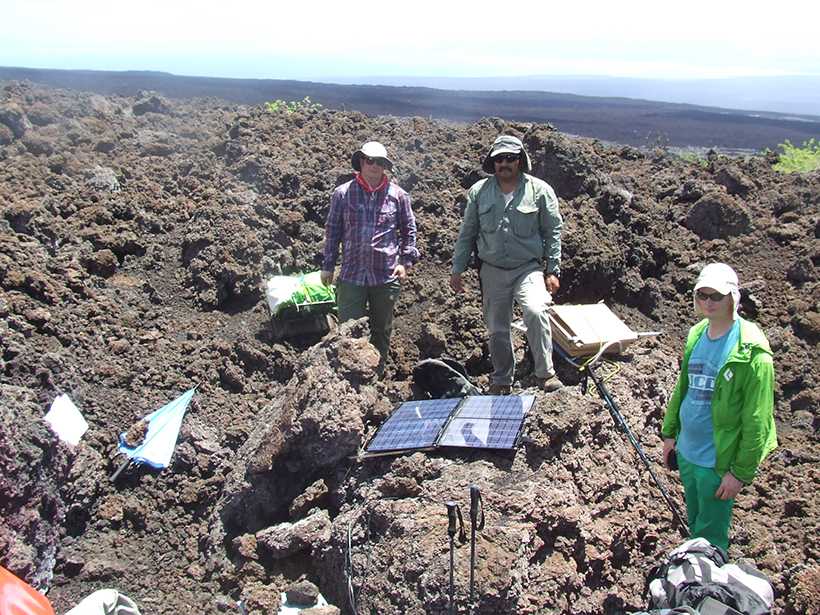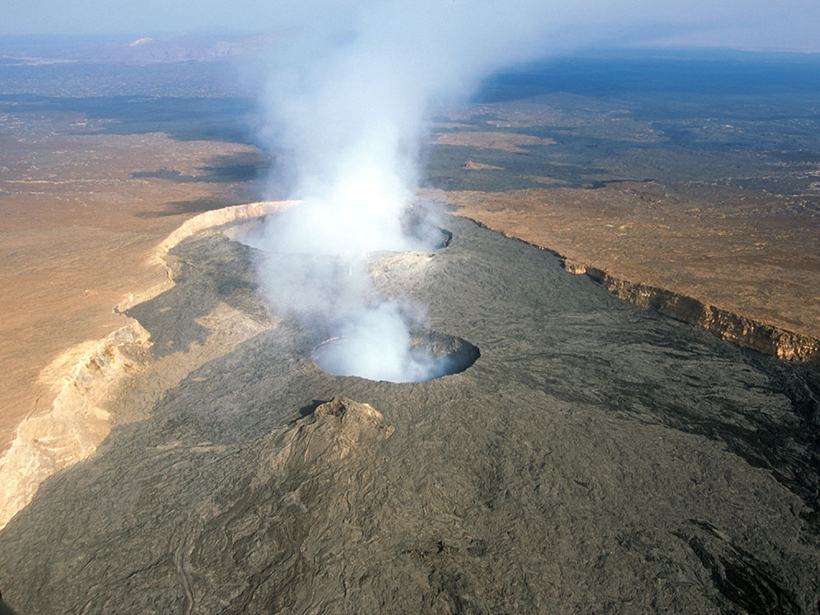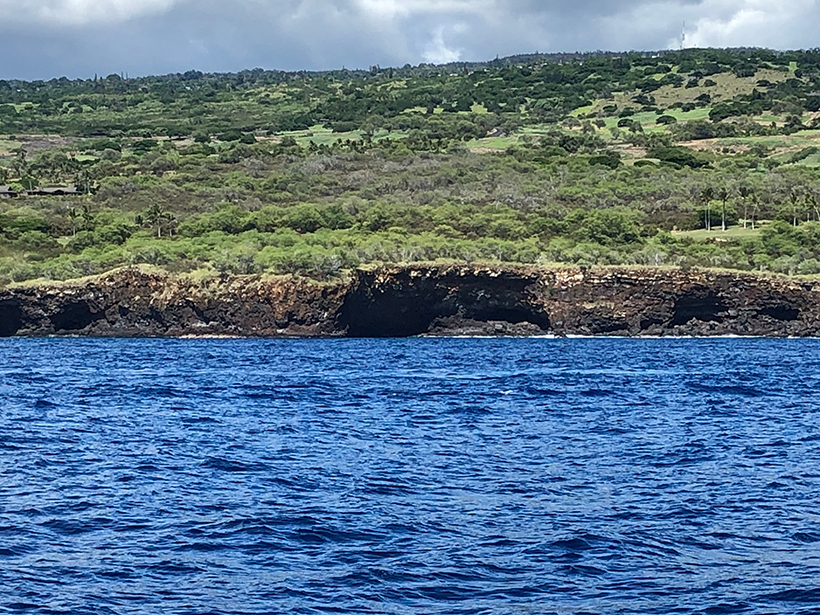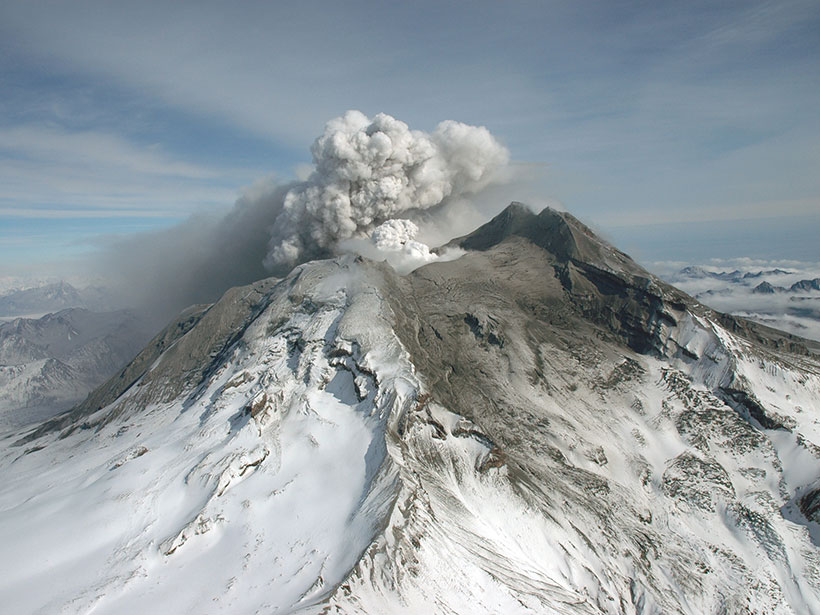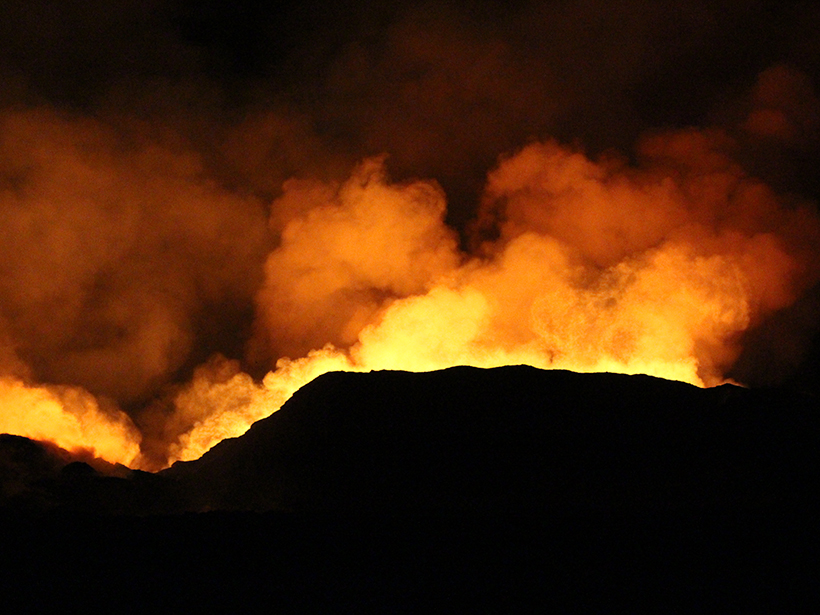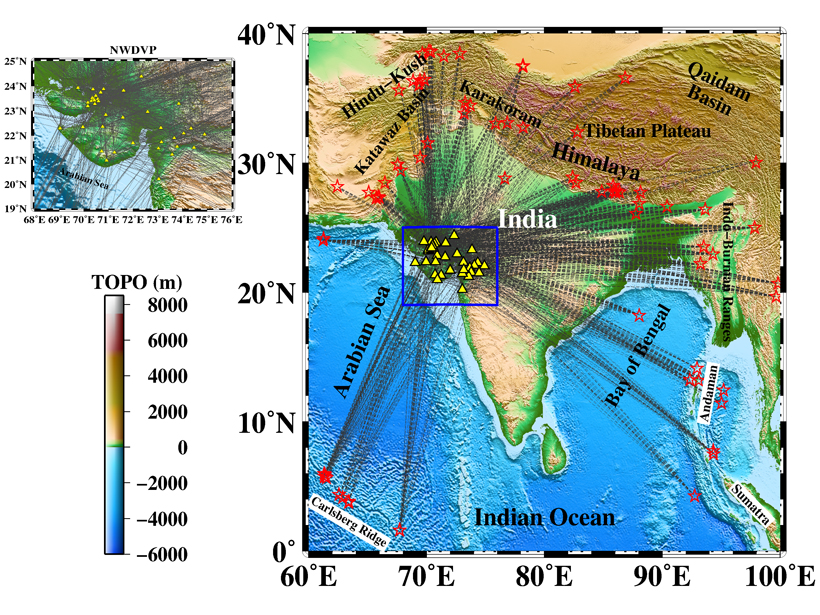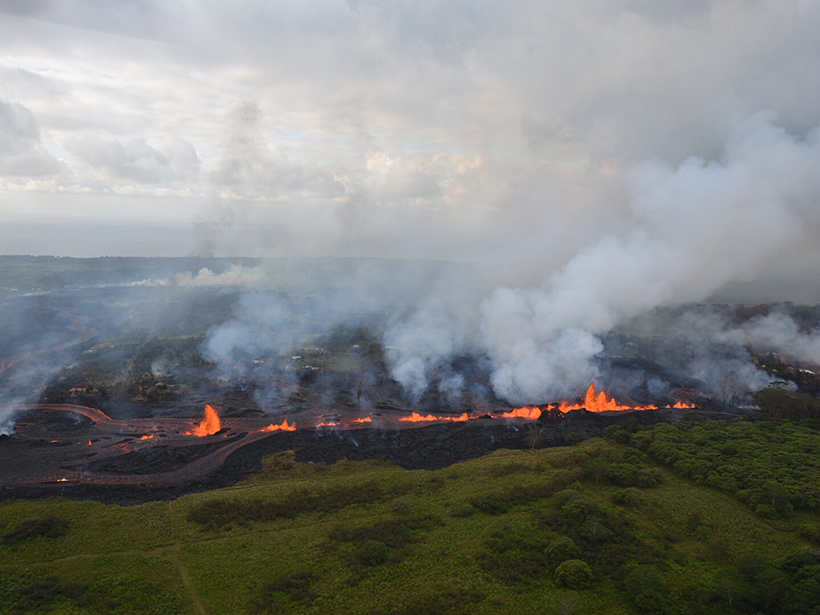Insights from a 13-year monitoring program of Sierra Negra—one of the many volcanoes that dot the Galápagos Islands—shed light on the volcanic evolution of basaltic eruption.
volcanoes
Earth’s Volatile Balancing Act
How do greenhouse gases and water circulate from minerals deep below Earth’s surface into the atmosphere and oceans—and then back again? Our understanding continues to evolve.
Breaking Up Is Hard to Do, Especially for Continents
A decade-long research collaboration has revealed that the split between Africa and North America roughly 200 million years ago was more drawn out than previously thought.
Deep Submarine Fresh Water: A New Resource for Volcanic Islands?
The discovery of large freshwater reservoirs off Hawaii suggests that other volcanic islands may have similar resources, which could help meet water demands amid population growth and climate change.
Volcanic Lands Warm Before Eruptions
Satellite data have revealed that ground radiant temperatures around volcanoes rose in the years leading up to eruptions. The observation may help in forecasting future volcanic activity.
Insights from the Depths of Hawaii’s Kīlauea Volcano
One of the world’s best monitored and most active volcanos still has secrets to yield, and researchers are turning to vapor bubbles trapped in melt inclusions to find them.
Hunting the Source of Deccan Traps Volcanism Using Seismic Waves
Seismic velocity patterns beneath the Deccan Traps region in western India reveal its volcanic history.
Ancient Eruption May Change Our Understanding of Modern Volcanoes
Bubbles trapped in magma from a 1,000-year-old event reveal how scoria cones might erupt and what impact they may have on the landscape and atmosphere.
Corn Syrup Reveals How Bubbles Affect Lava’s Flow
New research shows that huge bubbles can change the viscosity of lava and drastically affect how it moves across the landscape.
A Fresh Perspective on Intricate Volcanic Plumbing Systems
Combining commercial hydrocarbon and mineral exploration data with novel academic research and modeling capabilities helps answer key questions about underground magma systems.

